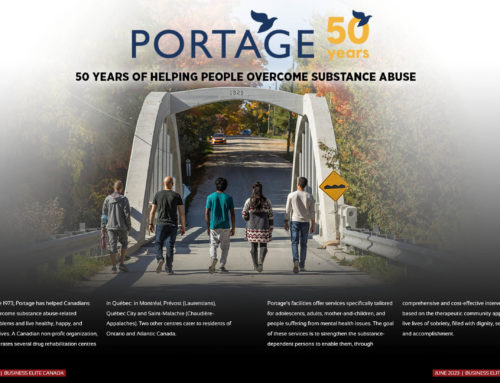Representing moving and storage companies
By Cheryl Long
Produced By Tom Cunningham
Your parents are moving into a retirement community and though they’ve sold or given away a portion of their furniture and other possessions, it’s still too much to cram into the family van. But you’re in luck! Your neighbour’s cousin’s friend has just started up his own moving business and he can transfer the rest of their belongings for a great price.
Too good to be true? According to the Canadian Association of Movers (CAM), this is the just the type of scenario that causes heartache and financial loss for consumers.
Moving goods is serious business and while there is some provincial legislation in Canada that governs the industry, it is not well-enforced, said Paul Leader, President & CEO of CAM. Choosing a company that is a member of this national association can help consumers avoid the pitfalls associated with “rogue movers”.
“You can go with somebody who doesn’t have the insurances in place, but once they load your goods and you have no record of them or no indication that he has a business license, the company can disappear with your furniture,” Leader said. “If he doesn’t have the correct insurances in place, what if the truck burns down? If you haven’t bought any replacement value protection, as we call it, how do you get compensation for your goods that were on the truck?”
Educating consumers is one of CAM’s mandates. Their website has a section dedicated to people searching for a moving company, offering tips on getting a proper estimate, the basic principles of finding and hiring a mover, packing suggestions, how to register a complaint against a moving company, and more. They also operate a directory of member companies that can be searched by location.
“We try to get our name out there all the time,” Leader said. “If you go to the Ministry of Government & Consumer Services in Ontario — and the same in Alberta and B.C. — they’ll refer you to the Canadian Association of Movers.”
Members in Canada and worldwide
The association dates back to the late 1960s and devotes much of its efforts to advocating on behalf of both members and consumers. The membership currently consists of about 375 domestic and international companies, including movers, relocation companies and van lines, plus suppliers to the industry and affiliates. Though CAM is dedicated to furthering the interests of their membership, they also devote a great deal of their efforts to consumer awareness. The association provides leadership, motivation, research, education, special programs, networking opportunities and technical advice to its members.
One of CAM’s largest events is their annual conference. Scheduled this year for November, keynote speaker David Orazietti, Ontario’s Minister of Government & Consumer Services, will outline the government’s efforts to strengthen fairness in the consumer marketplace and increase transparency across several sectors, including the moving industry. The conference will also include representation from the Canada Border Services Agency (CBSA) and the Canadian Department of National Defence.
“That’s part of our mandate — to add credibility to the moving and storage industry,” Leader said. “We lobby the government at all levels and encourage them to follow our lead, and consumer awareness is a big part of that.”
The association’s biggest challenge continues to be the battle against rogue movers, and it’s been a major part of their focus for the last two years, Leader said. Many consumers don’t realize that CAM members abide by a higher standard of ethics and along with the proper insurance, their members can also produce registered business and workers’ compensation numbers. Asking to see those numbers is one way to ensure that a company is legitimate. It’s also smart to get three estimates, never just go with the lowest price and sign a contract.
“I can’t stress enough that if consumers need to move, then they need to find a reputable mover. And they need to know if they go through the members in CAM’s trade association, they will have a mover that stands behind a code of ethics (and) they’ll have systems and policies in place that will ensure they get the best move possible.”
Clearing up confusion at the border
Another major project for CAM is happening at the border. CAM members work with consumers who are relocating into Canada, whether from the United States or overseas. In most cases, the goods arrive at the border separately from their owners and have to be cleared through customs by the moving company. Inconsistencies in the way that process is handled can cause issues for both the movers and the customers, Leader said. CAM is currently working with the CBSA to clear up the confusion.
“Some of their offices apply a different set of rules than others. Some say no, they don’t need to see the person; they need to see the goods and documentation,” Leader explained. “Others say they need the person moving into Canada to show up with their goods.”
But it doesn’t make sense, Leader said. Some of the customers may already have relocated to areas far from the Canadian border while awaiting their possessions. Since all of the documentation has to be completed prior to moving day and an approved list of goods is available to be matched to the contents of the moving truck, there’s no need to have the owner on site at the border.
“I think (CBSA has) realized that their system is somewhat antiquated and they’re open to change. They’ve been really receptive to dealing with this,” Leader said.
CAM provides a wealth of information to consumers planning a move, whether it’s to a neighbouring city or halfway around the world. To learn more, visit www.mover.net.







